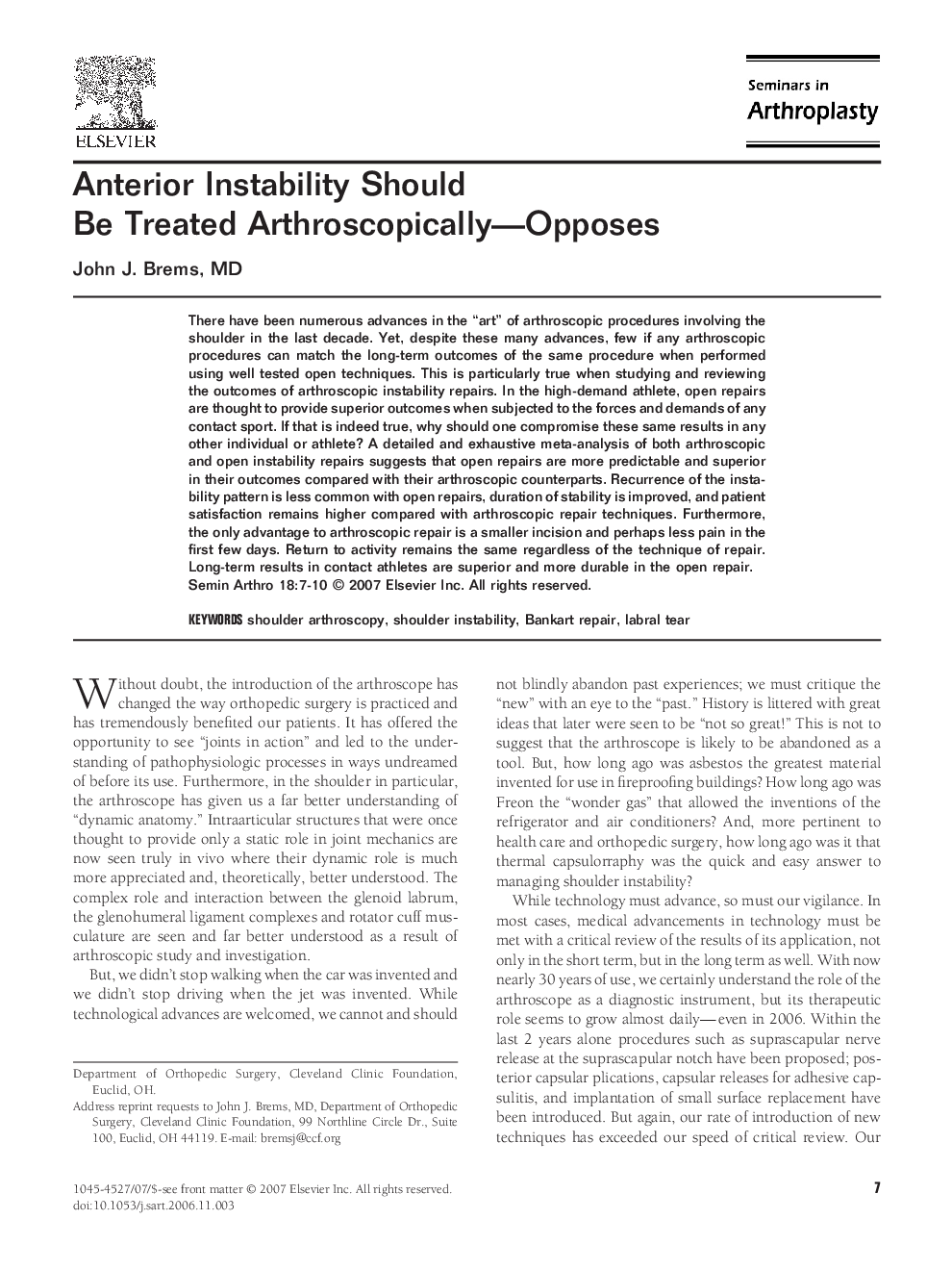| Article ID | Journal | Published Year | Pages | File Type |
|---|---|---|---|---|
| 4094401 | Seminars in Arthroplasty | 2007 | 4 Pages |
Abstract
There have been numerous advances in the “art” of arthroscopic procedures involving the shoulder in the last decade. Yet, despite these many advances, few if any arthroscopic procedures can match the long-term outcomes of the same procedure when performed using well tested open techniques. This is particularly true when studying and reviewing the outcomes of arthroscopic instability repairs. In the high-demand athlete, open repairs are thought to provide superior outcomes when subjected to the forces and demands of any contact sport. If that is indeed true, why should one compromise these same results in any other individual or athlete? A detailed and exhaustive meta-analysis of both arthroscopic and open instability repairs suggests that open repairs are more predictable and superior in their outcomes compared with their arthroscopic counterparts. Recurrence of the instability pattern is less common with open repairs, duration of stability is improved, and patient satisfaction remains higher compared with arthroscopic repair techniques. Furthermore, the only advantage to arthroscopic repair is a smaller incision and perhaps less pain in the first few days. Return to activity remains the same regardless of the technique of repair. Long-term results in contact athletes are superior and more durable in the open repair.
Related Topics
Health Sciences
Medicine and Dentistry
Orthopedics, Sports Medicine and Rehabilitation
Authors
John J. MD,
